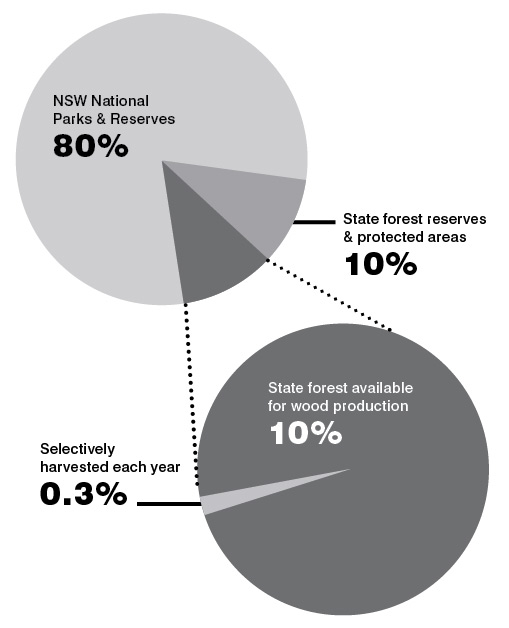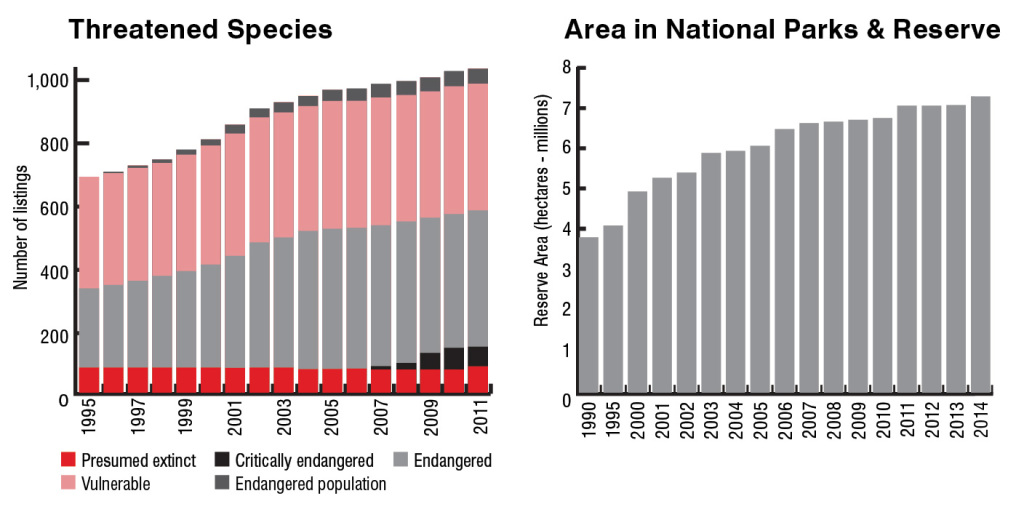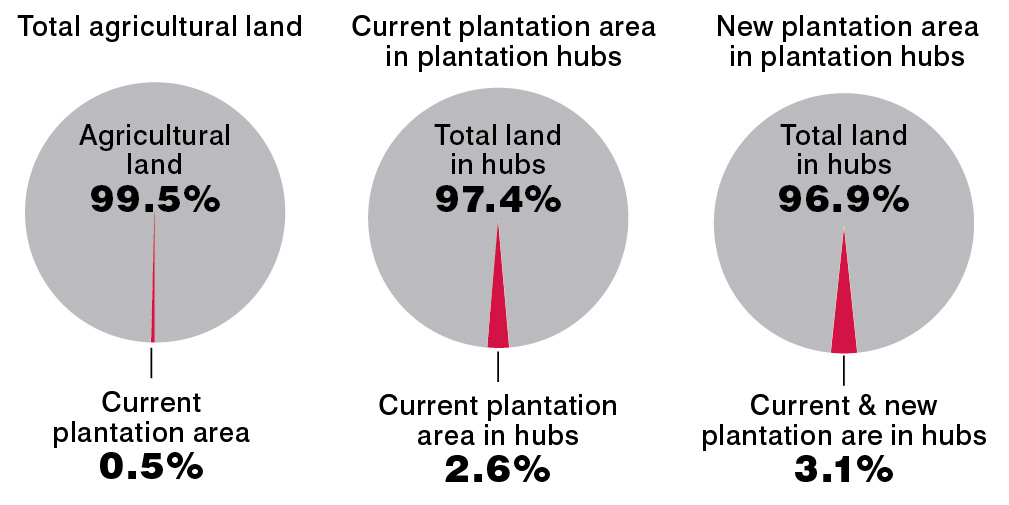Towards 2050: NSW Timber Industry Reform
While the NSW Timber industry applauds the government’s NSW Forestry Industry Roadmap, current industry resources cannot meet increasing demand in NSW for timber. Urgent industry reform is essential. The NSW Timber Industry: Towards 2050 sets out the industry’s proposed reforms.
NSW has the potential to be self-sufficient and provide for all our timber requirements. We have ample native forest resources and world-leading environmental regulation.
New South Wales has regional timber communities whose livelihoods depend on meeting this increased demand for native timber.
Yet Australia runs a $2bn annual timber trade deficit, importing large quantities of timber from developing countries whose native forests are largely unregulated.
| Timber NSW’s reform proposals address four major issues: |
| Secure Supply: The first step is to secure and boost the supply of timber from all sources in NSW: public forests, private forests and plantations. |
| Evidence Base: NSW needs a cross-tenure forest health monitoring system. Only a solid evidence base can underpin sound forest management decisions and balance social, economic and environmental values. |
| Accurate Timber Resource Planning: NSW needs a local scale resource assessment system to enable accurate resource planning. This is the key to successful, long term timber supply contracts. |
| Holistic Forest Management: NSW must address key forest threats – pests, weeds, bushfire – holistically to manage NSW forests for a range of social, economic and environmental aims. |
Planning Now for 2050
The NSW timber industry has a critical part to play in addressing the shortage of affordable new housing in decades to come, in boosting regional communities, environmental protection and the carbon economy. Timber is a renewable, recyclable, energy efficient and natural resource. As the population of New South Wales grows, the construction industry needs many more sustainably produced timber and forest products. In Sydney alone, a further 660,000 affordable new homes must be built by 2031. Currently, 75 per cent of sawn timber produced in NSW is used in residential construction. Demand for timber will rise considerably in the decades ahead. New South Wales has the ability to be self-sufficient in meeting the growing demand for timber, but to do this we need to grow our productive forest estate with stable, supportive policy settings that allow the industry to plan – and invest – for the long term. The NSW Forestry Industry Roadmap is a step in the right direction, but unless further urgent forestry reforms occur, NSW will be increasingly dependent on imported timber and NSW’s timber towns will disappear.
Secure Supply of NSW Timber
In recent decades the supply of local timber in NSW has fallen significantly from all sources: public forests, private forests and plantations. The conversion of State Forests to National Parks has halved the land area from which to supply timber from public native forestry in NSW.  NSW EPA regulation of timber harvesting on state forest has imposed increasingly prescriptive restrictions. The impact has been to render NSW forests unworkable, undermining their health and productivity over the long term. In addition, private native forestry has been underperforming or underutilized. There has also been underinvestment in plantations.
NSW EPA regulation of timber harvesting on state forest has imposed increasingly prescriptive restrictions. The impact has been to render NSW forests unworkable, undermining their health and productivity over the long term. In addition, private native forestry has been underperforming or underutilized. There has also been underinvestment in plantations.
|
Better Utilise Private Forests
Forty per cent of the NSW’s native forest estate is in private hands, but it’s a vastly underutilised resource. Private native forestry, or ‘farm forestry’, involves the selective harvesting of timber on private land. It’s a part of normal agricultural activity and does not include land clearing. Yet it has been regulated as a form of land use change akin to clearing. As such, farmers have been deterred from farm forestry by an onerous and unwelcoming PNF governance system. With improved support, private forest owners can play a greater role in meeting the rising demand for timber.
Invest in Plantations
Softwood and hardwood plantations provide more than 80 per cent of the wood fibre and timber for the timber industry in Australia. However new investment in plantations has effectively come to a standstill. No significant areas of long rotation sawlog plantation have been established in NSW in the last decade. What is needed is regulatory support for investment, regional infrastructure around strategic plantation hubs and industry skills development.
Agricultural and plantation land use in Australia
|
Monitor Forest Health
Every year, timber supply is being eroded by new allocations of public lands to informal conservation reserves. This is being done in the absence of scientific evidence about the health and status of plants and animals across all NSW forests.  Almost doubling the national park estate has not prevented a dramatic rise in threatened species. Environmental decisions must be based on holistic evidence and focused on outcomes. There is currently no cross-tenure forest monitoring system to measure the extent of environmental problems and no system to monitor whether the creation of reserves actually solves these problems. Ironically, recent studies have shown that much of NSW’s forest estate is in poor condition, largely because the major environmental threats – pests, weeds and altered fire regimes – are not being managed holistically. Additionally, good forestry science (about forest health) has been traded off for heavy environmental regulation. What is needed is a cross-tenure monitoring system that monitors forest health and productivity, balances social, economic and environmental values and underpins sound forest management decisions.
Almost doubling the national park estate has not prevented a dramatic rise in threatened species. Environmental decisions must be based on holistic evidence and focused on outcomes. There is currently no cross-tenure forest monitoring system to measure the extent of environmental problems and no system to monitor whether the creation of reserves actually solves these problems. Ironically, recent studies have shown that much of NSW’s forest estate is in poor condition, largely because the major environmental threats – pests, weeds and altered fire regimes – are not being managed holistically. Additionally, good forestry science (about forest health) has been traded off for heavy environmental regulation. What is needed is a cross-tenure monitoring system that monitors forest health and productivity, balances social, economic and environmental values and underpins sound forest management decisions.
Accurate Timber Resource Assessment
The key to sustainable timber supply is accurate resource assessment at a local scale. Large timber supply variances of +/- 30 per cent under the current public FRAMES model are unworkable and unacceptable. Most supply estimates are now based on enormous supply regions within which timber quality and species mix is highly variable. As a result, performance under Wood Supply Agreements between the NSW government and the timber industry has been fraught with difficulty. In the 21st century it is critical to invest in technology to accurately assess and monitor all NSW timber resources, public and private, at the local level. Only then with improved resource planning can contracts for timber supply be entered into with confidence.
|
Holistic Forest Management
Once data exists on forest health and productivity across tenure types, NSW forests can be better managed for a range of social, environmental and economic aims. Best-practice silviculture principles reflect the fact that the timber industry has long experience of protecting and sustaining forest assets from fire, pests and weeds. They show that forest management initiatives should be deployed to enhance forest health.
This holistic approach is consistent with the Natural Resources Commission’s Brigalow and Nandewaar Cypress Review recommendations. The timber industry endorses NRC proposals for:
- ecological thinning in Cypress regrowth forests managed by NPWS, and
- commercial utilisation of timber generated from ecological thinning of River Red Gum and White Cypress regrowth being managed by NPWS.
|
|
New Roles for Timber
The 21st century heralds the Age of Timber. Supported by world-leading environmental regulation, the NSW timber industry must be recognized as major suppliers to the renewable, sustainable cellulose economy. In addition to its fundamental role in the construction sector, the timber industry is part of exciting innovation which uses timber and forest products in new ways and as a trusted custodian of our forests. These new roles for the NSW timber industry, along with its positive impact on skills and jobs in regional communities need to be communicated and understood, replacing outworn stereotypes.
|
21st Century Economies
Innovation in materials sciences is leading to what experts are calling the Age of Timber. The Cellulose Economy Wood-derived products such as cellophane, rayon and ethanol are well known, however the potential from new products is enormous. For example, carbon fibres derived from wood are now being used to make lightweight parts for motor vehicles and packaging for food and beverages. The Carbon Economy Wood also has the potential to generate renewable ‘bioenergy’ through the combustion of wood pellets or liquid biofuels. Exciting new opportunities also exist for the timber industry in carbon abatement markets, as Australia transitions to a bio-based economy.
Rise of the Plyscrapers
Cross-laminated and other types of ‘mass timber’ are now beginning to be produced in Australia for the first time, heralding a design and construction revolution. Cross Laminated Timber (CLT) plants in Australia are currently under construction. International House in Sydney’s Barangaroo is just one example of the use of ‘mass timber’ in high rise construction around the world. The potential to use new types of engineered timber for fast, affordable housing is too compelling to ignore.
Boost Regional Economies
The NSW timber and forest products industry currently contributes millions each year to the state economy and is a major employer in rural and regional NSW.
Timber Industry Value Added $2.4bn |
Annual Timber Export Value $219.5m |
Timber Industry Employment 22,000 |
The timber industry is critically linked to jobs and growth in many parts of regional NSW. Yet in the last two decades, falling timber supply has taken a heavy toll on regional communities.
Only with key timber industry reforms is it possible to triple the economic value of the NSW timber industry by 2050 and support job creation, as proposed in the NSW Forestry Industry Roadmap.
Build Skills in Forestry Hubs
A stark picture of the socio-economic disadvantage suffered by declining timber communities is provided by the national census in 2011.
The NSW Forestry Industry Roadmap target of 150,000 new timber industry jobs relies on boosting timber supply and fostering innovation in new products and markets for forest products.
Currently, Australia has limited high value timber processing and manufacturing capacity. Exports are mainly lower value raw materials or paper packaging products, while imports are typically higher value transformed products, such as furniture and building materials. This needs to change.
The key to rekindling prosperity in regional communities across NSW is to promote the possibilities of the Age of Timber and address skills development and training shortfalls in the regions.


